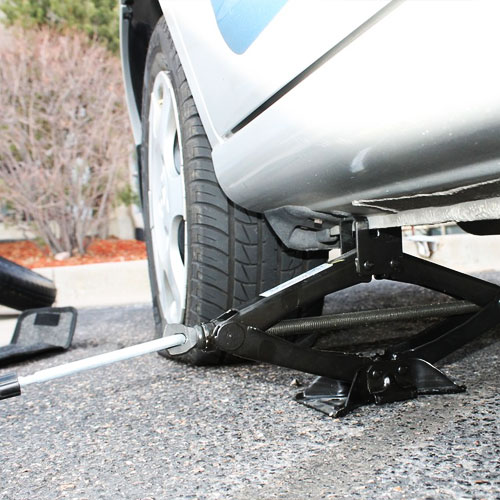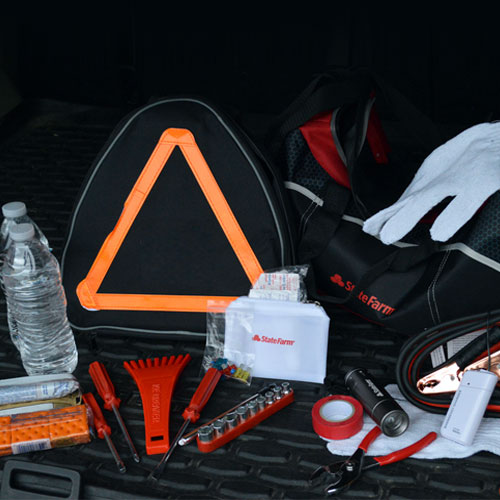HOW TO JACK UP A CAR SAFELY
Towing & Emergency Roadside Assistance Available 24/7
Everyone should know how to use the jack that comes with his or her car. Practice this at home so if you ever get a flat, you’ll know where the jack is, and how to safely and properly use it.
Steps
- Park the car on level ground and engage the parking brake. Leave manual transmission cars in first gear or reverse and put automatics in park. (Image 1).
- Place a chock or a brick behind or in front of (depending on the road’s incline) the wheel diagonally opposite one being jacked up.
- Place the jack under the car’s frame nearest the wheel to be jacked up. There’s a thin lip that runs along the side of your car’this is where the jack should go. Your owner’s manual will have a picture of the safest place to put the jack. Bumper jacks will attach to slots in the front or rear bumper (on older cars).
- When the jack is in place, insert the handle according to the directions on the jack, and turn or ratchet the handle to make the jack rise. If it lowers or cannot turn, rotate the handle the other way, or flip the switch marked ‘R’ and ‘L’ (for ‘raise’ and ‘lower’). (Image 2)
- Raise the jack high enough to either replace a flat tire or place the car on a jack stand (a sturdy temporary stand at a fixed height). If you’re changing a flat, remember to leave extra room’the new tire will be full of air. (Image 3)
- Lower the jack when you’re finished. Be cautious and go slowly. If you’ve used a jack stand, before lowering the jack you will need to raise the car slightly to pull the stand from its place. (Image 4)
Tips
- Make sure the jack is sitting flat on the ground before raising. Avoid trying to jack up a car on appreciably tilted ground.
- Make sure everyone is out of the car before jacking it up.
- There are several different kinds of jacks. If you’re not sure how to operate yours and don’t see directions in your owner’s manual, call for help.

- Some cars have special jacks and slots on the side of the car for the jack (most notably Volvos and BMWs).
- Loosen the wheel nuts before jacking the car off the ground. Replace the wheel nuts before lowering the car, make them finger-tight. Once lowered, finish the job with the tyre iron. Ensure they’re tight.
- Leave the jack up, as well as the stands, as an added insurance to safety!
Warnings
- Cars can slip off jacks. Be careful. It’s unsafe to get under a car that’s supported only by a jack. Use jack stands if the car will be off the ground for any period of time, if you plan to get underneath it, or if you’ll be working or making repairs on the car.
- Don’t jack up a car unless you’re on a cement surface. Watch out for soft shoulders and very hot pavement, which may not support the jack.



